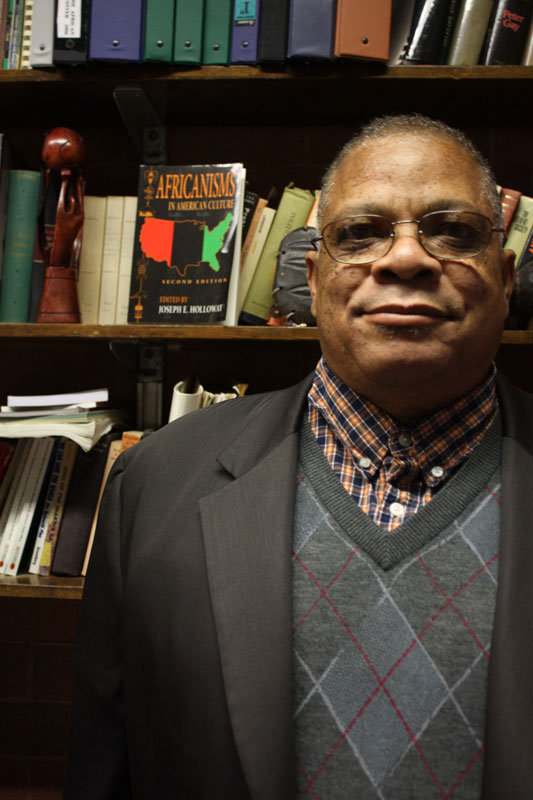
The Pan African Studies Department at CSUN has launched a Slave Rebellion Database on its Web site that comprises a collection of documents and data relating to slave populations and slave rebellions in the United States.
Pan African studies professor, Joseph Holloway, created the database which exposes the public to African-Americans’ story of struggle and fight for freedom.
“Part of the reason (for creating the database) is that many scholars and historians have argued that African-Americans, that black people, did not respond to their oppression and that they were docile,” Holloway said. “Here I provide documentation that shows that they rebelled at every opportunity.”
The Web site includes a timeline of slave revolts in the United States from 1526 to 1829, six interactive maps, a history of slave insurrections, a photo gallery, slave records and a slave population database.
Holloway said it is the first time in the United States that all this information has been made available in one place.
“It is the most comprehensive database on enslave populations ever put together and no one (before) has provided a single source, archive, where all this information has been made available,” Holloway added.
Pan African studies professor and department chair, Dr. Tom Spencer Walters praises the database’s uniqueness.
“It opens the door for all kinds of possibilities not only for our students here but for people interested in slavery and issues relating to discrimination and race,” he said.
Holloway said that while most of the statistical information was obtained through federal government records, some of the documents include personal diary entries, essays and articles.
Vaughn Gill, a CSUN graduate student who has collaborated with Holloway in the creation of the database calls it a “useful tool.”
“It is like going to the library to research a document,” Gill said.
The Web site has more advantages because some of the information found in the database is not easy to find elsewhere since it was found in people’s homes, Gill added.
One example is the documentation of the number of slaves some households had, Gill said.
Holloway said the slave population database is broken down into various categories. These include: female and male enslaved populations, free blacks, free females, and the total white population in each region, city and state.
CSUN student Nancy Trinh, 19, has not seen the Web site but she said she thinks it sounds interesting and after reading history books she knows “slavery is not talked about much and if it is, it is from an American point of view.”
“I think it will be a good idea to have people know the other side of slavery from a different perspective,” Trinh said.
Holloway said the idea to do this project began 30 years ago, and for over 20 years he has been collecting the information to make it happen.
However, a lack of funding prevented Holloway from publishing his findings and this is why he decided to make it available for free.
The Web site, which anyone can access, is driven by volunteers and is maintained by donations made to the project, Holloway said.
He said finding resources has been his biggest challenge while creating the Web site.
“For the most part, I have financed this and I finance this basically through the profits from The New World African Press, which I am the CEO of, to build, to finance, to hire people, to work on the slave rebellion Web site,” Holloway said.
The New World African Press is also accessible through the Web site. It is a list of books on African-American issues.
Gill said the most challenging part of creating the Web site was organization, putting all the information in an easy format and cross-referencing.
Trinh said she likes the idea of having the Web site available to all students, not just African- American students, like herself.
“We don’t really get the chance for people to come in and tell the personal stories that they have unless you are from a black family where family members can tell you,” Trinh said.
Walters said he has incorporated the database into his department but it should not be limited to just Pan African studies students.
“This is a significant part of American history, it is not just a PAS (Pan African Studies) database, it is like an icon that everyone should have the opportunity to take a look at,” he said. “How they interpret it or use it is dependent of how people see it, but at least take the opportunity to look at it.”
Holloway is interested in expanding the Web site by providing lesson plans, lectures on the African-American experience and a question board that anyone from elementary school and beyond can have access to.





